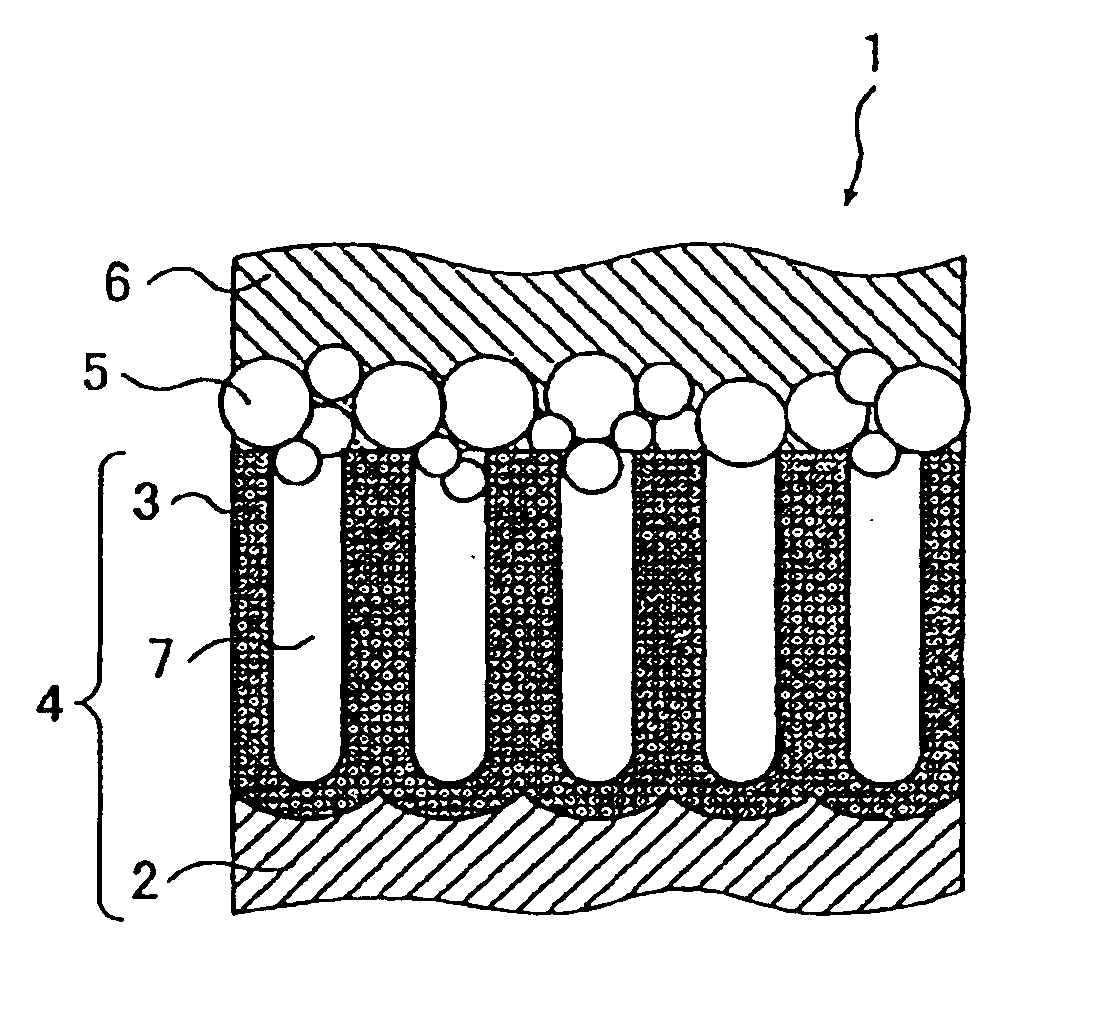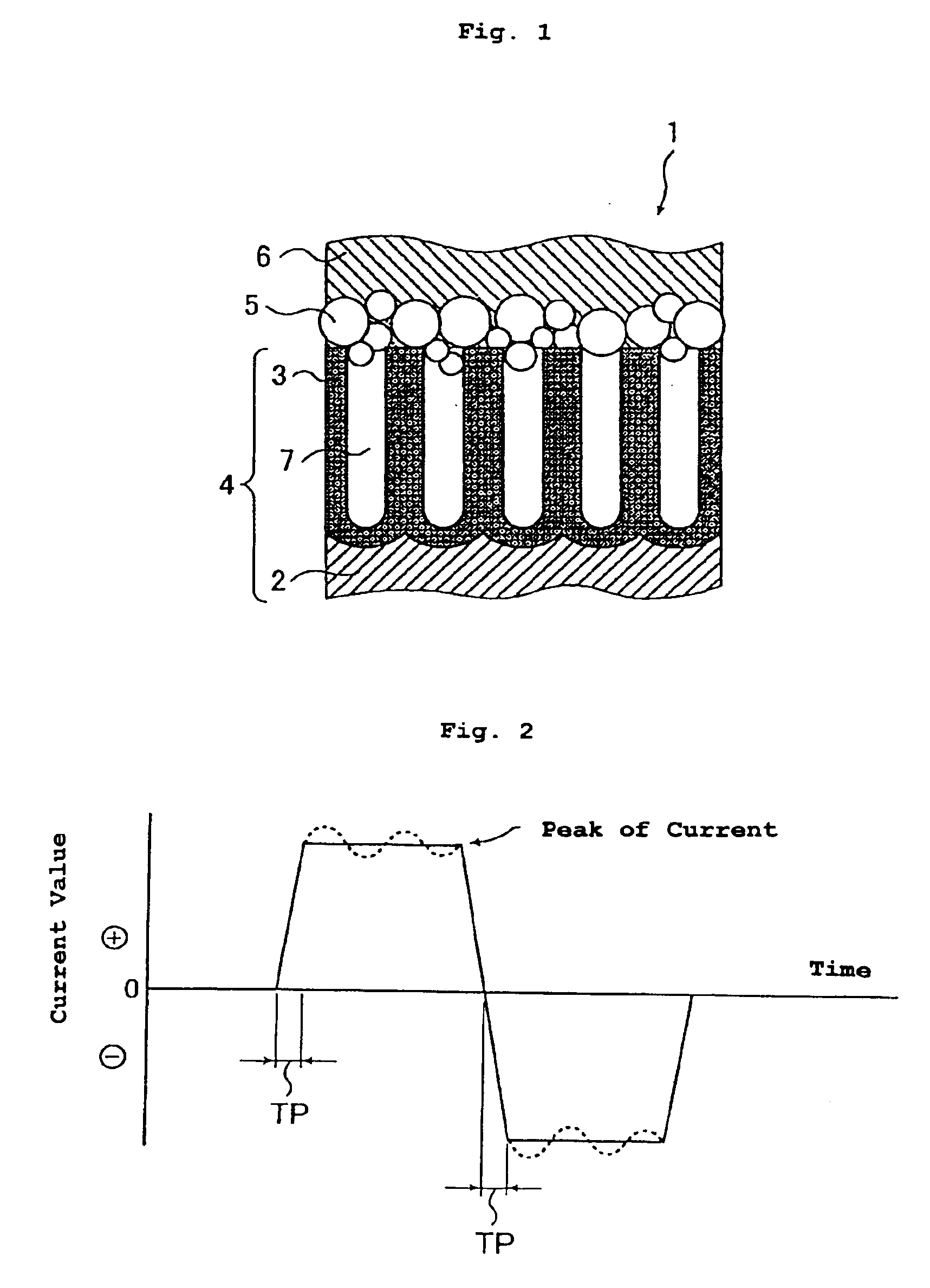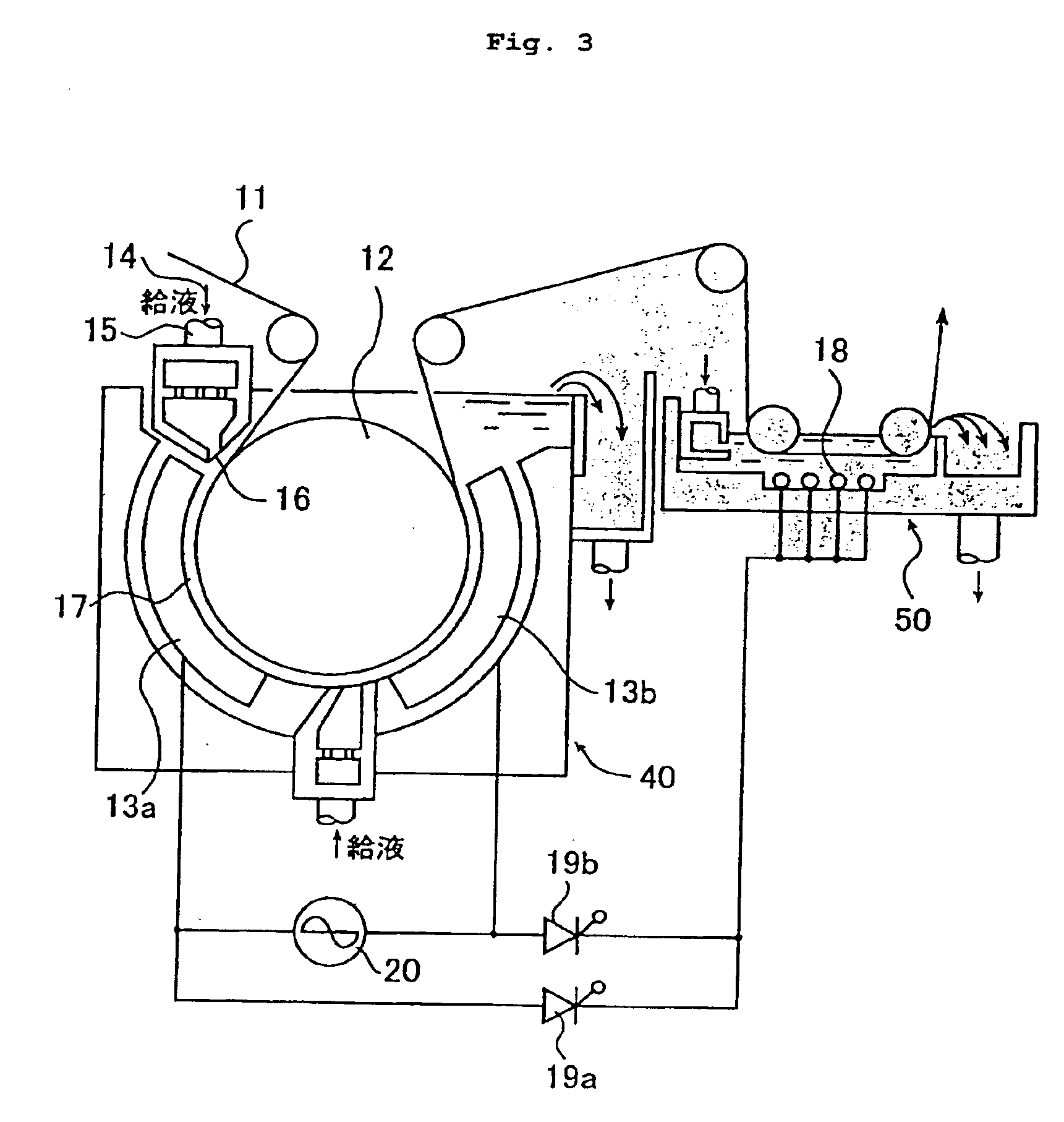Lithographic printing plate precursor
a technology of lithographic printing plate and precursor, which is applied in the direction of photosensitive materials, instruments, photomechanical equipment, etc., can solve the problems of reduced sensitivity, low hydrophilicity of organic materials, and exothermic loss, and achieve excellent smearing resistance and press life, improve residual color and residual film, and maintain sensitivity
- Summary
- Abstract
- Description
- Claims
- Application Information
AI Technical Summary
Benefits of technology
Problems solved by technology
Method used
Image
Examples
examples
[0363]The present invention is described in detail below with reference to the examples, but the present invention should not be construed as being limited thereto.
examples i-1 to i-6
and Comparative Examples I-1 to I-6
Thermal Positive Type Image-forming Layer Preparation of Support
[0364]As a metal substrate, an aluminum sheet having a thickness of 0.24 mm which had been surface-treated by an alkali degreasing method was used. The aluminum sheet was subjected to the following treatment in this order.
1) Mechanical Surface Roughening Treatment
[0365]The aluminum sheet was subjected to ablation with supplying an abrasive in a slurry state (pumice having an average particle size of about 15 μm) at a rotation number of 150 rpm with a No. 0.9 nylon brush.
2) Chemical Dissolution Treatment i
[0366]The concentration of sodium hydroxide was fixed at 20 wt %, the solution temperature was 40° C., and the treating time was adjusted so that Ra reached 0.3 μm. Thereafter, the aluminum sheet was washed with flowing water for 10 seconds, immersed in a solution having the concentration of sulfuric acid of 120 g / liter at solution temperature of 50° C. for 10 seconds, and desmutted. T...
examples i-7 to i-12
and Comparative Examples I-7 to I-12
Thermal Negative Type Image-forming Layer
[0388]The same procedures were repeated as in Examples I-1 to I-6 and Comparative Examples I-1 to I-6 up to sealing treatment, on the conditions as shown in Table I-2 below.
Formation of Image-forming Layer
[0389]The image-forming layer coating solution (prescription B) having the composition shown below was coated on a substrate by bar coating and the coated layer was dried in an oven at 100° C. for 1 minute. The thicknesses of the coating solution before and after coating were measured with a micrometer at 10 points and averaged. As a result, the average thickness of the thermal negative type image-forming layer (prescription B) was 1.5 μm on average and the standard deviation was 0.8 μm. The thickness computed from the weight variation of the coating solution before and after coating and specific gravity was 1.7 μm. This was used as the lithographic printing plate precursor.
[0390]
Image-forming layer coatin...
PUM
| Property | Measurement | Unit |
|---|---|---|
| Thickness | aaaaa | aaaaa |
| Thickness | aaaaa | aaaaa |
| Thickness | aaaaa | aaaaa |
Abstract
Description
Claims
Application Information
 Login to View More
Login to View More - R&D
- Intellectual Property
- Life Sciences
- Materials
- Tech Scout
- Unparalleled Data Quality
- Higher Quality Content
- 60% Fewer Hallucinations
Browse by: Latest US Patents, China's latest patents, Technical Efficacy Thesaurus, Application Domain, Technology Topic, Popular Technical Reports.
© 2025 PatSnap. All rights reserved.Legal|Privacy policy|Modern Slavery Act Transparency Statement|Sitemap|About US| Contact US: help@patsnap.com



